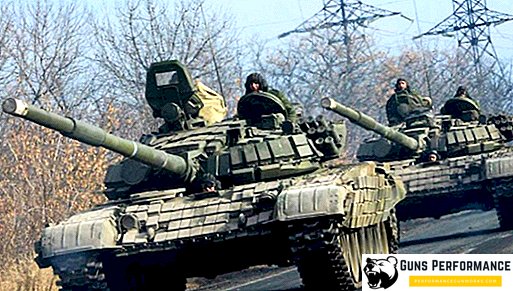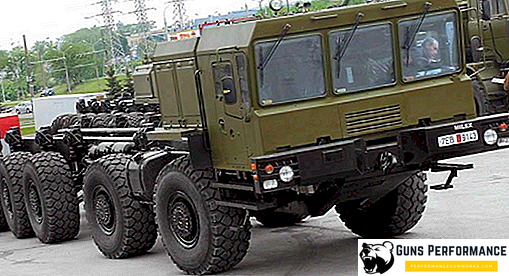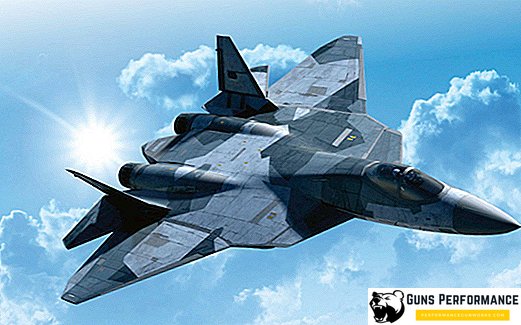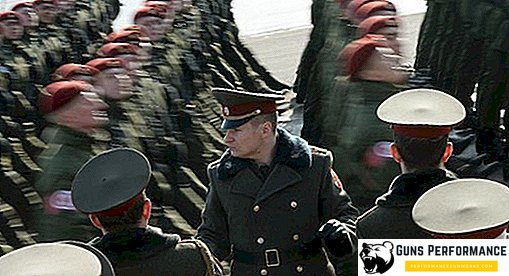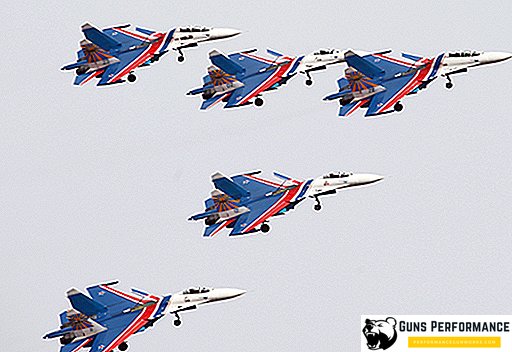
A throwing weapon is a large group of cold weapons designed to hit an enemy from a distance, without direct contact with him. Its action is based on the human muscular strength (in most cases) or on the elastic properties of various materials: wood, metals, animal tendons, and plant fibers.
Throwing edged weapons appeared at the dawn of human history, probably, our ape-like ancestors also used it. The most ancient types of throwing weapons were ordinary sticks and stones, but the first real weapon that could be thrown at the enemy was a spear. Approximately 80 thousand years ago a stone tip appeared at the spear, and a massive processed stone was attached to a smaller stick — that is how the ax was invented.
Rock drawings and excavations of archaeologists give us an idea of what was the ancient throwing weapon. Most often used light spears or throwing clubs. They allowed to hit prey that the hunter could not catch up with, or damage the enemy without close combat with him. The possibility of hitting a prey at a distance sharply reduced the probability of the hunter’s death or injury, and expanded the range of prey. In addition, this weapon was universal: it could not only throw, but also use in melee.

The first "specialized" throwing weapon is the so-called spear thrower - a stick with a recess at the end into which a spear was inserted. With the help of such a device, it was possible to throw it over a much greater distance. Despite the fact that the spear gunner was invented back in the Stone Age, such a device was used in later historical periods. The ancient Romans, for example, they were called amentums.
A real revolution, which also took place in the Stone Age, is the invention of the bow and slings. These types of cold throwing weapons served man for thousands of years and left the brightest mark in the history of military affairs. The bow is still used today for sport shooting, and the sling lasted on the battlefields until the 16th century.

In the period of Antiquity and in the Middle Ages, throwing hand weapons played the most important role on the battlefield, it was spread on all continents: in Europe, the Middle East, India and China, Africa and America. Their value bows, slings and crossbows began to lose only after the invention of firearms. But even after that, it took several more centuries for the muskets, rifles and rifles to completely drive out the bow and arrows from the battlefield. In addition to hand throwing weapons, throwing machines also became widespread in various historical periods. These mechanisms used various elastic elements or counterweights to throw fairly heavy objects at the enemy. This type of throwing weapon includes ballista, trebuche, kamnemety, arrow-throwers, catapults.

Cold throwing weapons are used today. But currently its value is minimal. Armed with special units are throwing knives, crossbows. However, they are not used too often, because modern silent firearms are much more efficient.
Archery has become an Olympic sport and popular entertainment, bow and crossbow are also used for hunting.
Classification of throwing weapons
There are several types of classification of throwing weapons, all of them are based on the features of its design and application. First of all, there are two large groups:
- hand throwing weapons;
- throwing machines.

The first group includes bows, slings, slingshots, crossbows, axes, shurikens, and the second group includes larger types of throwing devices that were often used when taking enemy cities or fortresses: catapults, ballistae, trebuche, etc.
In turn, hand throwing weapons can be divided into:
- conditionally throwing;
- weapons that work by the elastic properties of materials, as well as lengthening the lever;
- throwing.
The first group includes those types of cold arms that were not originally intended for throwing. For example, a combat knife, an ax, a hammer. Although, in this case, it is sometimes difficult to draw a clear boundary: there were (and there are) special throwing knives, axes (tomahawks) that could well have been thrown at the enemy. Some types of copies were intended to be thrown at the enemy, while others were only for use in close contact combat.

The second group includes throwing weapons that can be called classic: bows, crossbows, slings, and various spear throwers. It also can be attributed, and spiritual weapons: tubes that shoot spikes or arrows (usually poisoned), very popular among the primitive tribes of Africa and South America.
The third group includes weapons that were originally designed for throwing and were used only as a last resort in close combat. This group includes darts, throwing spears, knives and more exotic weapons: Japanese shuriken (syaken), Indian chakras, boomerangs.
Also throwing weapons are classified by the number of components that are included in its composition:
- single component;
- multicomponent.
The first group includes throwing spears, knives, axes, and the second group includes a bow, crossbow, sling, slingshot or blowpipe.
Throwing weapons: description
It is difficult to give a detailed description of all or even most types of cold throwing weapons, because their list is huge. Therefore, in this material we confine ourselves to only a few types of the most common and curious throwing weapons.
Bow. The most famous, popular type of throwing weapons, which is also one of the most ancient: the bow was invented in the Stone Age. Man used onions for hunting and for war. And this weapon was distributed on all continents. It was made from elastic wood and from the horns and tendons of animals. Arrowheads were originally made of stone, then for this purpose they began to use metals.

During the period of Antiquity and in the Middle Ages, onions were used everywhere, but representatives of some nations achieved special heights in the handling of these weapons. An example is the famous English archers who shone on the battlefields of the Hundred Years War. This ancient hand throwing weapon was highly esteemed among the nomadic peoples of Eurasia: the Scythians, the Mongols, the Tatars, the Nogais. To become a good archer, you needed years of training and excellent strength training. In addition, high-quality composite onion was not very cheap.
Crossbow. This ancient hand throwing weapon was known at the time of Antiquity, and both in Europe and in the Far East. But his “finest hour” came in the Middle Ages. Since the crossbow was significantly superior to the bow in its destructive power and accuracy, it was mainly used against soldiers protected by armor. This medieval throwing weapon had one more plus: it was possible to prepare a crossbowman much faster than an archer.

Sling. This type of missile weapon was especially popular in Antiquity, although it was used in medieval Europe. Sling - is one of the few types of knives, which has not changed for the entire time of its existence. The most famous were the slingers from the Balearic Islands, who served as mercenaries in the armies of Carthage and Rome. For throwing, nuclei from lead or baked clay are often used. There is evidence that the Incas used heavy gold cores. After the fall of Rome, the lead cores fell out of use, as they were too expensive. And, in general, in terms of its effectiveness, a good sling was not inferior to an archer, although it also took many years to prepare it.

Chakra. This is an Indian throwing weapon, which was a metal ring ground from the outside. In flight, it rotated and could inflict serious incised wounds. Although, for the effective use of the chakra, high qualifications of the fighter were also needed.

Boomerang. It is believed that this weapon is a further development of the throwing club. The boomerang is still used today by the Australian aborigines. It is a curved and flattened wooden stick that rotates quickly in flight. It is precisely due to the rotation that the boomerang is able to fly a much greater distance than an ordinary club and can inflict serious wounds on the enemy. In addition, with a certain skill, you can throw a boomerang so that it returns to its owner. Unless, of course, in flight, he does not hit the target.

Shuriken. This is a Japanese throwing weapon, which in recent years has gained wide popularity in Europe and America. In ancient Japan, the samurai warriors and the famous medieval spies, ninja, used the shuriken. The classification of shurikens is quite complicated, because there were a large number of different types of these weapons: in the form of darts, knives, stars, crosses, etc.
Dart. This is, in fact, a reduced spear, designed exclusively for throwing. Warriors of various nations used them as combat and hunting weapons, starting from ancient times. In Russia, darts were called sults. The most famous is the Roman pilum, which, however, is often attributed to the spears. Its mass could reach 3 kg. Serious armor could be pierced with such heavy weapons. Pylum when hit in a shield stuck in it, forcing the enemy to lower it. Light darts weighed 0.2-0.3 kg and were often used with a spearman.

Tomahawk. North American Indian weapons and the most famous throwing ax. Initially, tomahawks were made of stone, then the Indians began to use metal hatchets (they received them from European colonists). It should be noted that the tomahawk was usually used as a melee weapon, in real combat it was thrown extremely rarely.

Khorbat European all-metal throwing ax. He did not have an ax (a pole) in the generally accepted sense of this concept and was cut down (or forged) from one piece of metal. Herbat usually had two points, on the butt and on top, to that his handle was also sharpened. Therefore, these weapons hit the enemy with any part of them, as well as the chakra or shuriken. This ax could be used in melee.



